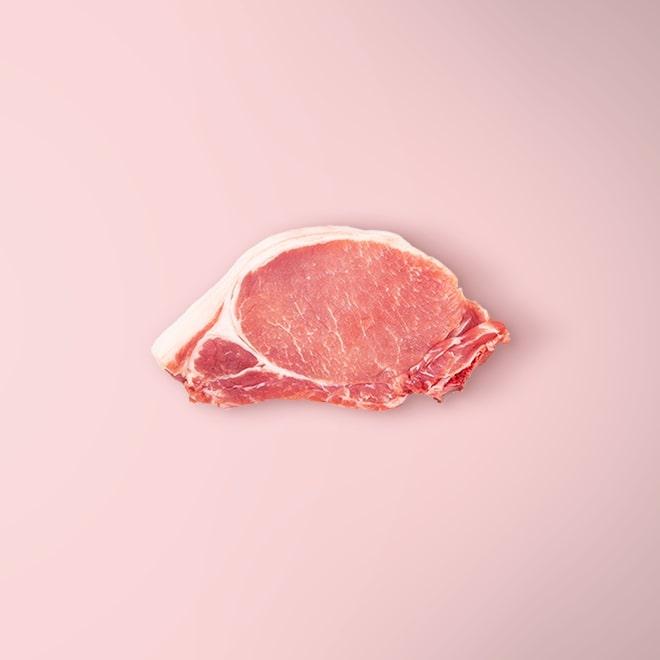Pork




Pork is celebrated around the world because the whole animal can be put to use from making sausages, head cheese, stock, pickled pig’s feet, lard, and so much more. It’s one of the oldest types of livestock and its origins have been traced back as early as 5000 BC, so it’s no surprise we’ve come up with so many ways to prepare and preserve it! Although we’ve all heard pork referred to as “the other white meat”, the USDA actually classifies it as red meat.
Select raw pork with meat that has a pink hue and white fat. If the bone is visible, the coloring should be light rather than brown.
Raw whole cuts of pork can be stored in the refrigerator for 2-4 days, while ground pork should be used within two days. Place uncooked pork on the bottom shelf of the fridge, so it can't touch or drip onto other foods.
All cuts can be kept in the freezer for 6-12 months, and for safety defrosted in the refrigerator.
Before storing cooked meat, allow it to cool off and then transfer it to the refrigerator within two hours.
Humans have been preserving pork since the middle ages using combinations of salt, sugar, nitrates, and smoke.
Cuts like pork chops, cutlets, and tenderloins cook relatively quickly, making them well-suited for weeknight cooking. These leaner pieces of pork are considered done at 145 °F.
Larger cuts like pork shoulder or bone-in ribs take many hours to cook and lend themselves well to techniques like smoking, roasting, or braising. These cuts need to cook between 185-200 °F, so the collagen can break down, which increases the tenderness and juiciness of the meat.
The larger the piece of meat, the longer it should rest before slicing and serving.
Cook a whole pork shoulder in the crockpot or the oven over the weekend, shred it, then use it in tacos, pulled pork sandwiches, and pasta ragu during the week.
Use bacon grease to season your cast iron skillet, in place of olive oil or butter to saute vegetables, or to upgrade your homemade skillet-popped popcorn.
Try making a broth with leftover pork bones instead of chicken or beef and then use it in stuffing, soups (especially any bean-based soup), and pan sauces.
Pork is a great source of vitamin B1, but it’s also quite high in cholesterol and saturated fat.
Rendered pork fat or lard contains 48% monounsaturated, 40% saturated,and 12% polyunsaturated fats.
The amount of omega 6 and omega 3 fatty acids in lard can vary according to the diet of the pig. When a pastured pig is not fed grain they happen to have a higher omega 3 ratio compared to grain fed pigs.
In tropical climates, the lard from pigs that diet contains coconuts have high levels of lauric acid.
Corrections or improvements? Email us at
content@sidechef.com